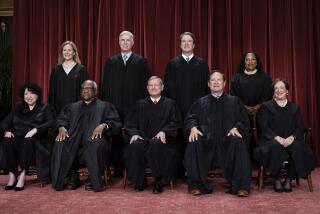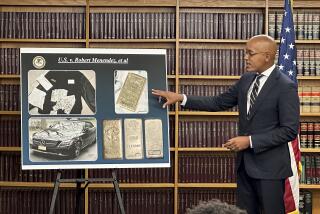The Friends of Charles Keating : Revelations about three U.S. senators underscore the ugly pattern
- Share via
The longer Senate investigators examine the relations between five senators and the failed savings empire of Charles H. Keating, the cozier they begin to look.
After 10 months of examination, the Senate Ethics Committee has yet to authorize a formal study that could lead to charges of unethical conduct. Even that step would leave the Senate a long way from making charges stick.
But what committee staff has turned up so far seems to show that at least three of the five who took campaign contributions from Keating then did whatever they could to help get government regulators off his back.
One of those three, Sen. Donald W. Riegle Jr. (D-Mich.), is actively involved in rewriting the laws regulating American banks as chairman of the Senate Banking, Housing and Urban Affairs Committee. The others are Sens. Dennis DeConcini (D-Ariz.) and Alan Cranston (D-Calif.).
No matter how their activities on Keating’s behalf looked to the senators at the time, it is now clear that they were working at least around the edges of a financial hurricane that is going to blow billions of dollars out of the pockets of American taxpayers before it passes.
Keating, alone, accounted for $2 billion of the losses at hundreds of incompetent or outright fraudulent savings and loan associations around the country. He was head of the Lincoln Savings and Loan Assn. in Irvine, Calif., when it failed. The total bill, which American taxpayers will pay in order to protect innocent depositors whose money would otherwise have been lost with the hundreds of failed institutions, will be at least $500 billion.
Some documents that have turned up so far were passed around to Washington reporters this week. As isolated incidents, the phone calls the documents chronicle from DeConcini and Cranston to the unlisted number of a savings regulator may seem small. So may the fact that Riegle had his staff keep in close touch with Keating.
But overall the pattern they portray is immensely ugly.
More to Read
Get the L.A. Times Politics newsletter
Deeply reported insights into legislation, politics and policy from Sacramento, Washington and beyond. In your inbox twice per week.
You may occasionally receive promotional content from the Los Angeles Times.










